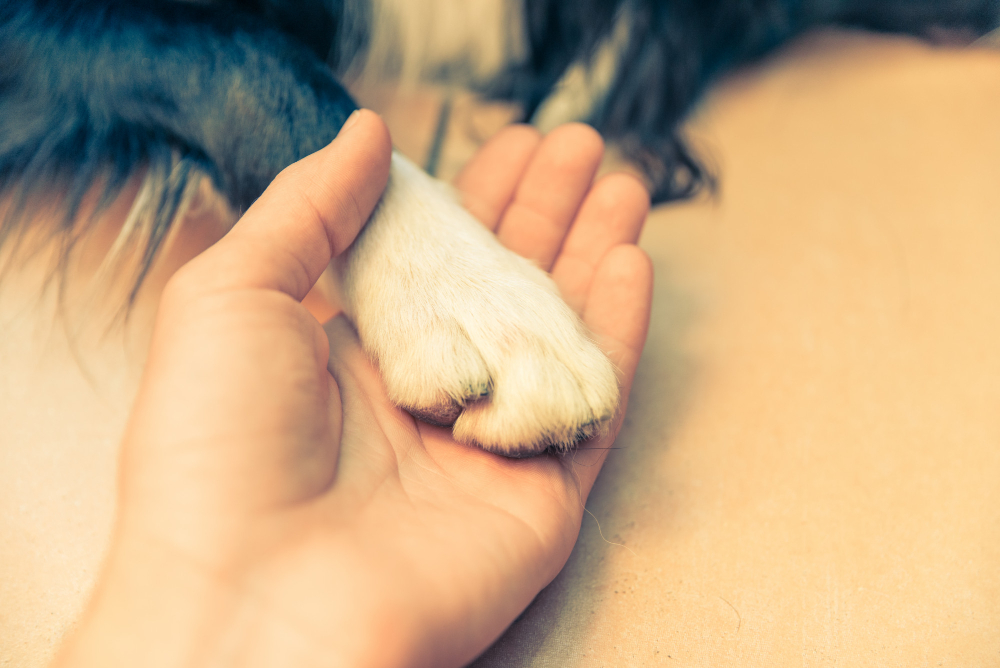The question of recognizing whether it’s time to put down an aging pet is standard at a pet bereavement gathering. When it’s time to put your pet down, they usually refuse to eat. To end their suffering, you can make an appointment for euthanasia when they refuse to consume their favorite foods and special treats.
Allowing your dog to starve to death is cruel. Yet, as a sign of their acceptance of the end of their lives, most elderly or terminally sick dogs have chosen to go days or weeks without eating.
Dietary restrictions may be imposed on sick dogs to help them recover or postpone their decline. For example, a low phosphorus diet may be prescribed for dogs with kidney failure. A low-sodium diet may be prescribed to dogs with heart issues. A low-fat diet may be prescribed for dogs with pancreatitis.
You can, however, remove the diet limitations if a dog becomes terminally sick and can no longer consume any of the prescribed special diets. It’s time to feed your dog anything he’ll eat once he’s stopped eating the special diets designed to help him recover from his ailment. For example, once their kidneys fail, you’ll give them a diet of pure flesh before allowing them to starve. Kidney failure is a slow death, but starvation is a speedier killer.
What Can I Feed My Dog at the End of Life?
When our older dogs are sick, we prioritize their well-being. You can assist in keeping your dog comfortable as he nears the end of his life by providing him with the proper care.
Every dog owner fears the eventual day when they must decide whether or not to intervene in the manner and timing of their dog’s death.
Dog ownership is the worst since you know your pet will undoubtedly die before you do. Many pet owners worry about when and how to say goodbye to a beloved senior or ailing canine companion. From the comfort of your home, you may check for symptoms that your dog’s body is breaking down and assess his well-being accordingly.
Do so cautiously when administering water using an oral syringe or squirt bottle. Squirt only a small amount of water into your dog’s mouth simultaneously, aiming his muzzle downward. To avoid choking and potentially aspiration pneumonia, don’t force too much water down his throat and into his lungs. The water on your dog’s tongue should prompt him to gulp it down. Suppression of the swallow reflex is a dangerous indicator.
For example, canned food or plain cooked chicken can be added to his regular kibble. In this case, letting him go off his prescribed diet is okay, as long as he doesn’t complain.
When Should a Dog’s Last Meal Be?
Veterinary euthanasia involves the administration of an overdose of a sedative, most commonly injectable pentobarbital, by the physician performing the procedure. The procedure is rapid and painless, taking about 10 to 20 seconds on average. Then, as the dog drifts off to slumber, his heart stops.
Choosing euthanasia is difficult for pet owners, but it is also the greatest gracious gift we can make to our companions. See your veterinarian if you are unsure if your dog is suffering or if euthanasia is right for your dog.
To ensure that your dog has a routine that he is comfortable with and appreciates, it is best to stick to your typical daily schedule. For example, sit down with your loved one instead of going for long walks.
Always consult with your trustworthy veterinarian before making this decision. Discuss the quality of life checklist for dogs with your veterinarian. If your dog’s quality of life is being harmed, it’s time to think about rehoming him.
Find out if the medication can help ease your dog’s discomfort. Pain relievers, appetite enhancers, and a wide variety of other drugs fall under this category. Regarding the short term, comfort is more essential than the possibility of long-term complications.
Record the good and bad days of your dog’s life so you can learn from them. There will come a moment in our lives when the bad days exceed the good ones, and we must learn to accept this fact.
What Do You Do on The Last Days of your Dog’s Life?
It’s easy to become depressed if you realize that this is the last time you and your dog will be doing these things together. However, it’s common for dogs to reflect on their emotional states. In essence, our dogs are affected by our moods the same way we are.
Dogs don’t necessarily whine or wail when they are hurt. Even for veterinarians, assessing chronic pain can be challenging since animals (and people) often modify their behavior to deal with it. Painkillers provided by a veterinarian may be the only method to evaluate if your dog’s demeanor improves.
The issue of euthanasia has always been divisive. Today, euthanasia’s role in society is a hot-button issue. A vet facility is an option for some dog owners who prefer euthanasia at home, but it is also an option for others who prefer their dogs to spend their final moments there.
Consider taking a few days off to recuperate from the experience. It is best to tell the receptionist about your circumstances when setting up an appointment so that you can select a quiet time for your visit. Bringing a friend or family member along for moral support is always a good idea. Some veterinarians will visit your home if it’s more convenient for you.
If your dying canine has already been admitted to the hospital, you are welcome to pay a final visit and say your goodbyes. But if your pet is under anesthesia, it may be kinder to allow euthanasia and let you see him afterward.
How Do I Make My Dog Comfortable Before Euthanasia?
Euthanasias are almost always swift and painless for the animals involved. This is still a quick surgery that can save your dog from a terrible death, even if there are obstacles.
There are few things more poignant for a dog parent than having to make the difficult decision of putting a cherished pet to sleep. However, this suggests that dog parents can make rational decisions when facing a morally challenging situation.
- Make sure he’s kept toasty. Set up an inviting sleeping area for your guests. Make sure he has a company or leave him alone, based on his wishes.
- Find out if the medication can help ease your dog’s discomfort. Pain relievers, appetite enhancers, and a wide variety of other drugs fall under this category. Regarding the short term, comfort is more important than the possibility of long-term complications.
- Plan for your dog’s final days. Pet euthanasia services at your house or an oral sedative to be given beforehand can make the process less stressful if your dog is afraid of going to the vet. Choosing between burying or cremating your loved one is a personal decision.
- Tell your dog that he can go potty now. Tell him you love him and appreciate his friendship, and tell him he can go whenever he feels ready.
- Have a discussion with your friends or family members about what you’re experiencing. These individuals can serve as a sounding board for your thoughts as you assess your dog’s comfort level. And don’t forget to communicate with your dog. Hold him and pet him while you talk about it. Then, when he’s ready, your dog may let you know.














